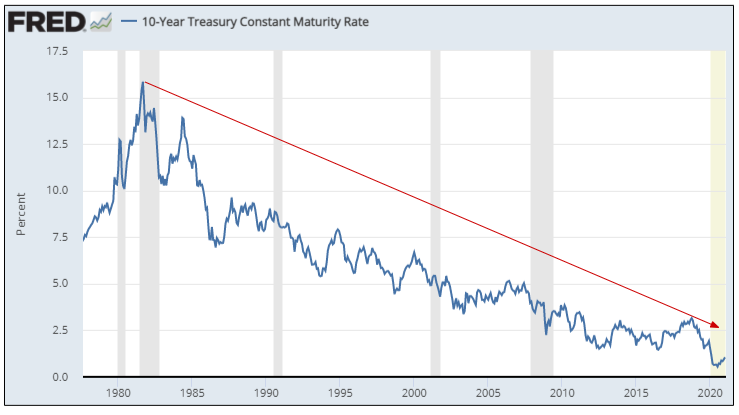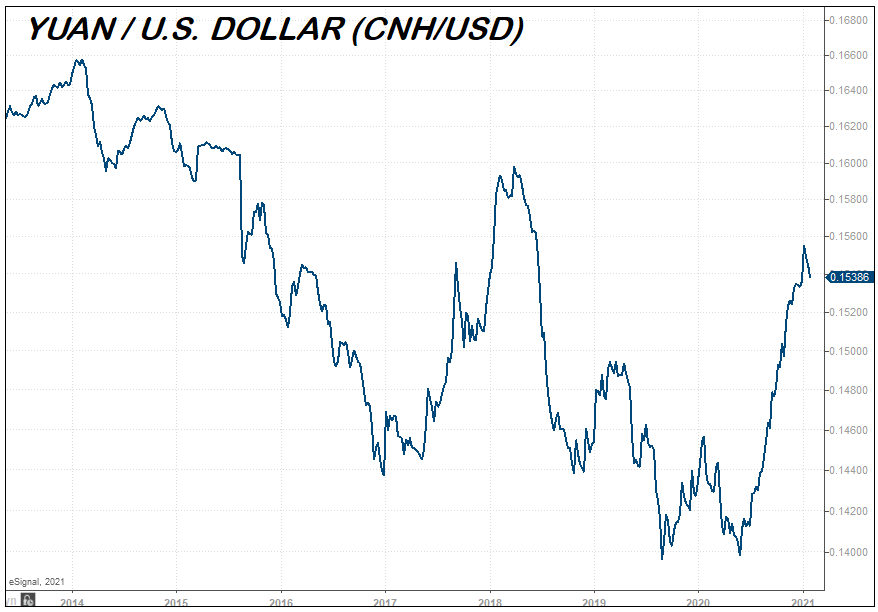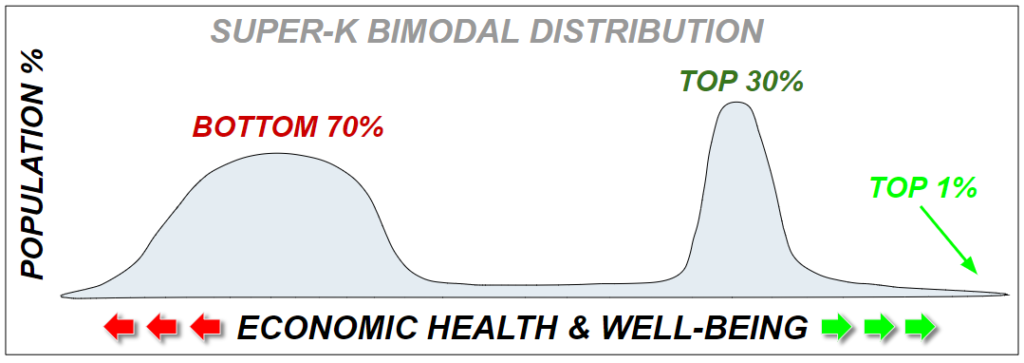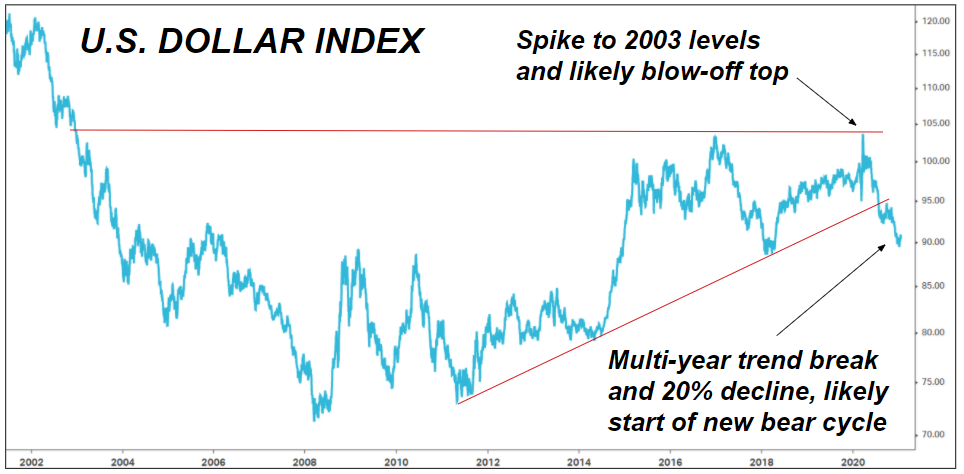You have likely heard of Robinhood, the zero-commission stock trading app that exploded in popularity during the pandemic. (It was already popular pre-Covid, but lockdown boredom and stimulus checks sent sign-ups to new heights.)
On Thursday, Jan. 28, Robinhood ignited bipartisan fury with its decision to restrict users’ ability to buy calls or shares in GameStop (GME), the stock at the heart of an epic short squeeze.
The perception was that Robinhood cut off trading access to its retail customers, who were long GME, in order to placate its hedge fund paymasters, who are short GME and would prefer the price to fall.
The main charge was that, in restricting the ability of small investors to buy GME, Robinhood was doing the bidding of Citadel, a giant hedge fund with a market-making operation and a high-frequency trading arm attached.
Citadel was also a known backer of Melvin Capital, the $12.5 billion hedge fund that received a $2.75 billion emergency cash infusion to stay afloat, after losing heavily on GME and other shorts.
Because commission revenues are zero, Robinhood makes the bulk of its profits from something called “payment for order flow,” which involves giving firms like Citadel the chance to take the other side of retail customers’ trades (a consistently profitable thing to do).
The optics of the situation made it appear as if Robinhood were in Citadel’s pocket.
This came down to a business model where Citadel is Robinhood’s No. 1 customer, because Citadel (and other giant market-making firms) are the ones who pay Robinhood. The millions of investors who use the Robinhood app for free are not customers themselves; their order flow is actually the product.
(This is a natural extension of the old Silicon Valley rule of thumb: If a product is free, the mass-market user is the product, in terms of their time, attention, or habits being monetized.)
To sum up, Citadel, a giant hedge fund, was directly involved in the GameStop short, by proxy through its Melvin Capital connection and possibly with its own short book; and was also Robinhood’s largest customer, via the “payment for order flow” arrangement; and might have been a direct beneficiary of Robinhood’s actions restricting customer ability to buy GameStop shares and call options (because hedge funds wanted the GME price to fall).
The whole thing was a very bad look for Robinhood. It genuinely appeared as if the small investor, Robinhood’s hypothetical customer, was getting abused as a favor to Robinhood’s paymaster, a giant hedge fund.
Then, too, an extra layer of irony was involved — so thick you could cut it with a knife — thanks to Robinhood’s name, positioning, and mission statement.
- The original Robin Hood, a character of English legend, was a benevolent bandit who stole from the rich and gave to the needy; by looking out for hedge funds at the expense of small investors, Robinhood seemed to be doing the reverse.
- In March 2016, Robinhood tweeted “Let the people trade”; the tweet resurfaced to point out Robinhood’s hypocrisy in stopping people from trading (by not letting them buy GME).
- Robinhood’s stated mission is to “democratize investing”; by helping a giant hedge fund at the expense of small investors, it seemed to be reinforcing plutocracy (rule by the rich) instead.
Robinhood’s perceived hedge fund favoritism provoked a surprising surge of bipartisan fury.
If you imagine American politics as a spectrum, with the far left at one end and the far right at the other, the left-most polarity would be represented by people like Alexandria Ocasio-Cortez (AOC) and Elizabeth Warren; and the right-most polarity people like Donald Trump Jr. and Ted Cruz.
On Thursday Jan. 28, both left and right — AOC and Warren, Trump Jr. and Cruz, along with many others — came together to condemn Robinhood for its elitist anti-investor actions.
“This is unacceptable,” tweeted AOC. “We now need to know more about @RobinhoodApp’s decision to block retail investors from purchasing stock while hedge funds are freely able to trade the stock as they see fit.”
Ted Cruz then tweeted a thumbs-up in response to AOC, as Republicans and Democrats in both the House and Senate announced plans to hold hearings.
In addition to this, too many celebrities to count shared their disgust with Robinhood, and their support for the small investor trying to buy GME.
It seems like an open-and-shut case in respect to the fact that, even though GameStop buyers are trying to play a game with the market, hedge funds have been playing those same types of games for decades; so why should the playing field be tilted in favor of the hedge funds who were short?
While the deep well of anger was understandable, and legitimate, it entirely missed the real story.
Despite the way things appeared — and the way they were interpreted — Robinhood did not suspend the right to buy GME shares (and a handful of other names) at the request of Citadel.
Robinhood took the actions it did — and another popular firm, Interactive Brokers, did the same — out of fear that the whole system would break, and that Robinhood itself could be wiped out.
In the immediate aftermath of the GME halt, Robinhood tapped $600 million worth of credit lines and did a $400 million emergency capital raise from its main investors, which should indicate the severity of the situation.
Robinhood was afraid the GameStop situation would destroy not just the hedge fund shorts, but Robinhood itself.
That is why Robinhood restricted trading, and that is why Robinhood built a billion-dollar firewall of added capital buffer before allowing GME buys to resume.
Now, one may ask, why did Robinhood let an avalanche of bad press fall directly on its head?
Why would Robinhood, as a firm, let all of Washington D.C. and the whole world believe they had done an awful thing, in helping Citadel at the expense of their investors, instead of explaining what really happened?
Because if Robinhood explained what really happened, all hell would have broken loose. And it still might.
The first thing to understand is that, in the morning trading session on Thursday, Jan. 28, the Redditor army (which overlaps with the Robinhood user base) came very close to achieving their goal of setting off an “Infinity Squeeze” in GME.
Looking at what happened, and the way it did, it is clear that GameStop was mere minutes away from going completely vertical, at which point it could have run to $1,000 or more.
If the infinity squeeze had unfolded — and it was oh, so close — various Wall Street entities, including not just hedge funds but brokers and banks, could have been forced to eat more than $60 billion in losses.
That is worth emphasizing again: Sixty. Billion. Dollars.
The Redditor Army came very close to doing it. They may yet succeed in doing it. Things are moving so fast, the infinity squeeze may have already happened by the time you read this.
Or, alternatively, government authorities may have been properly read into the situation, and GameStop trading entirely halted, or the Reddit rebellion crushed. We don’t know which it will be, as of this writing.
But we know the squeezers came very, very close — and are still trying — and Robinhood panicked, and then rounded up a billion dollars in emergency funds.
The events of Thursday, Jan. 28 are related because it was the near-completion of the Infinity Squeeze that scared the daylights out of Robinhood; and it was the buy restrictions set in place by Robinhood (and Interactive Brokers, among others) that prevented the Infinity Squeeze from happening. Temporarily at least. It may yet come to pass.
There is a lot to work through here. To start we’ll walk through the $60 billion estimate and explain where that comes from. Let’s do some quick math:
- The tradable share float for GameStop Corp., according to FinViz, is 50.65 million shares.
- A recent estimate of the short float — meaning the percentage of shares that have been borrowed for a short sale — is 121.98%. (It is entirely possible for shorts to make up more than 100% of the share float, for technical reasons we won’t get into here.)
- If the Reddit army can trigger an “infinity squeeze” — meaning the price is pushed so high that margin calls force the shorts to buy back at any price, because their brokers are forcing them out of positions — the GME share price could run to $1,000 or more. (It is above $400 in the Jan. 29 premarket as of this writing.)
- If the caught-out hedge fund shorts were forced to cover 100% of the GME float at $1,000, that would cost about $50 billion (because $1,000 times 50.65 million shares is just over $50 billion).
- But the short float in GME remains above 100%. That is because, even as some hedge funds have closed out of their GME shorts, others have reshorted again, in hopes of winning the epic battle with the Reddit army to prevent the squeeze.
- If, say, the shorts had to cover 120% of the share float at $1,000 — in order to cover the short float — that would be a sum greater than $60 billion, rather than $50 billion.
- If the price were squeezed above $1,000 per share, the final cover price, forced by the brokers, could be even more than $60 billion. It could be a price tag so high, in fact, that not only would multiple large hedge funds go bust, a number of brokers and possibly even banks could get taken out alongside them.
Now, you may ask, why is $1,000 per share our reference number?
It is a rule of thumb estimate, but it also makes sense because, the higher the GME share price goes, the more that “infinity squeeze” dynamics start to accelerate:
- As the GME price rockets higher, a “gamma effect” means market makers have to buy an increasingly large volume of shares to cover their short call option risk.
- Also, as the GME price rockets higher, risk departments get nervous and various hedge fund shorts are forced to close out. This buying activity adds even more rocket fuel to the buy price.
- At a certain level for the GME price, the hedge funds lose control of their destiny, as their prime broker (the entity on the hook if the hedge fund collapses) demands that the GME short be closed — or alternatively closes the position on the hedge funds’ behalf, buying back the GME shares at market. Once again, when this happens, the added buying power sends the price even higher.
The net effect is something like pulling the stabilizer rods out of a plutonium reactor. The more rods that you pull from the reactor, the more unstable the reactor becomes as the chain of plutonium reactions speeds up.
At a certain point — or in our metaphor, a certain price threshold — the chain of plutonium reaches a critical phase and the whole thing melts down.
That is the point where the GME share price could go to $1,000 or even higher — possibly even to $3,000 or $5,000, who knows — because there aren’t any shares to buy, other than the ones that the Reddit army is sitting on.
This is how an infinity squeeze works, and it also clarifies why the attempt is rational if you can pull it off. The Reddit army does not intend to hold its GME shares forever.
They just want to hold the shares long enough so that blown-out hedge funds, or their brokers, are forced to buy in at some insane share price of $1,000 or even higher, transferring great wealth into the Reddit army’s pockets as the hedge funds and brokers go bust.
If you execute an infinity squeeze properly, you don’t stick around forever. You exit by selling to your vanquished opponents who are forced to buy, at a price that simultaneously transfers wealth from their hands, in a process that could very well bankrupt them — while making you rich.
And again, as we said earlier, this almost happened on Thursday, Jan. 28. The Reddit army came very, very close.
- In premarket trading on Jan. 28, the GME share price briefly exceeded $500.
- In regular trading on Jan. 28, the GME share price ran above $468.
- Somewhere up in that stratosphere, probably north of $500 per share, the metaphorical plutonium reactor would have gone vertical. The price rise would have accelerated faster and faster, blasting past $1,000 and then — boom.
- The reason this did not happen was because Robinhood and Interactive Brokers pulled the plug on customer share and call buying — arguably just in time to save their own skins.
The problem, from Robinhood’s perspective, is that a successful infinity squeeze could have killed the firm. It could have ended Robinhood, the brokerage, by burying the firm in an avalanche of “failure to deliver” lawsuits.
Keep in mind that this whole thing — this whole concept of an infinity squeeze — revolves around the concept of a short book greater than 100% of the float, and not enough shares available to get out.
It’s like a game of musical chairs, where there aren’t any chairs left because they are already being held, and if you are short you have to buy a chair at any cost. Your only alternatives are thus to pay a king’s ransom or go bankrupt.
The problem for Robinhood, in result, is that Robinhood as a firm was also “short” GameStop shares in a de facto kind of way, because of Robinhood’s obligation to deliver shares to anyone who exercised a GME call option and wanted delivery. Here is how that works:
- Buyers of out-of-the-money GME call options would have the right to exercise their call options — and take delivery of 100 GME shares per contract — if the shares closed in the money.
- If a true infinity squeeze took hold, then thousands of out-of-the-money GME call options would become in-the-money call options and get exercised.
- Robinhood, as a firm, would be contractually responsible for delivering GME shares if those call options were exercised. They would have to go out and locate hundreds of thousands of GME shares, and give them to the exercising call option holders.
- But in the midst of an infinity squeeze, where the squeezers are holding all the shares, there aren’t any shares to be found! Robinhood was looking at an impossible situation: They might be on the hook for hundreds of thousands of GME shares, in a market where nobody wanted to sell them (because the Reddit army was holding them all)!
The condensed version of the story is: Robinhood would have been on the hook to deliver hundreds of thousands of GME shares it didn’t have, at far higher prices, if the squeeze truly took hold and thousands of additional call options were exercised.
That prospect scared the living daylights out of Robinhood — and its clearing firm — and so they suspended the ability to buy shares and calls.
This also explains why Robinhood didn’t just come out and explain clearly what was going on. Imagine if Robinhood had said something like the following:
“Sorry guys, we suspended trading because there aren’t any GME shares left on the planet, and we were afraid you might bankrupt all of Wall Street, including us, if you pulled off your infinity squeeze and sent GME to $100 and beyond — and you came within minutes of actually doing it, which is why we panicked.”
Had Robinhood explained what really happened, it would have been an open admission that the Reddit army had come within minutes of pulling off the squeeze, and breaking the system in the process.
The effect would have been like waving a bloody pork chop in front of a pack of starving pit bulls. The Reddit army would have heard “you almost won” and tripled down on its efforts.
Robinhood was actually put in a nightmare situation. They couldn’t admit the real reason they blocked trading — but in refusing to speak clearly about their actions, they created a perception that might kill the firm anyway (the appearance of favoring hedge funds over small investors).
And this explains why Robinhood did a billion-dollar capital round-up. Robinhood realized it was caught between two existential threats:
- If Robinhood allowed GME trading and couldn’t find enough shares to fulfill call option exercises, they would either fail to deliver on their contractual obligations and be sued into oblivion, or run out of capital trying to pay for the GME inventory they needed to hold.
- But if Robinhood continued to block GME trading, they would look like a rotten tool of Citadel and their whole customer base would abandon them.
- So Robinhood took the third path — they tentatively allowed GME buying to resume, but got their hands on a billion dollars in emergency cash to cover financing needs if they had to round up GME shares at insane prices to fulfill contractual delivery.
The whole GameStop saga is one of the most fascinating things to ever happen on Wall Street.
As avid students of financial history, we can say with confidence we’ve never heard of anything like this dating back at least 100 years, dating back to the 1920s, and Jesse Livermore days, and the time before the Securities and Exchange Commission (SEC) even existed.
The other thing to emphasize here is that the story is far from over.
Or rather, it is far from over on the morning of Friday, Jan. 29, as we complete this piece. By later in the day it could already have ended, for all we know.
But as of right now, as we watch the GME share price again trade above $400 in premarket trading — and the WallStreetBets message board swell by an additional 1 million members in a single day — it looks like the Reddit army understands the power that it has.
They have done the math, and the math says the Reddit army can win. Especially as they probably have professional firepower on their side, too (in the form of hedge fund managers and individual traders who are betting on the success of the squeeze).
The whole thing is not just a quest to make a lot of money — by driving the GME share price into the thousands, where dead hedge funds and their brokers will be forced to buy the shares — but a sort of global protest movement.
The GameStop squeeze is like Fight Club — if you remember that 1999 film with Brad Pitt and Ed Norton — except set on Wall Street.
Or as others have said, it is like a new version of the “Occupy Wall Street” movement, except with $60 billion (or even more) at stake.
And the Reddit army may succeed because the story is so viral, and limited-risk participation is so easy. Buy shares of GME, possibly triple your money — with the worst that happens losing a few hundred or a few thousand dollars — and be part of a movement either way.
The resulting Reddit message board testimonials from GameStop participants all over the world, including this one from New Zealand — New Zealand! — were kind of amazing:
I only have a modest 8 shares — I got in early with my play money that I can afford to use every week, but this was returning $4,000 this morning off $300. This was huge for me and my family. This is a lot of gear that we weren’t able to afford but now we can.
There’s every chance, with everyone holding and buying, that this could even double!! Boys, thank you for holding and doing your part, you’re making a massive difference!
Multiply that sentiment — gratitude for a chance to “stick it to the man” and make money at the same — by the power of understanding the infinity-squeeze math, a million people a day joining Reddit to hear the story, and professional firepower joining the squeezers too, and you get the clear conclusion: They could really pull this off, and just might.
Unless, of course, the government decides that potential losses in the tens of billions are just too much — at which point the whole thing might get halted on orders from a higher authority, optics be damned, in the way the Hunt brothers’ attempt to corner the silver market was shut down by the Chicago Mercantile Exchange in 1980.
In our humble view, the Reddit army will win — and will keep pressing hard until they do — unless the authorities decisively intervene in favor of Wall Street establishment (hedge funds, banks, brokers, and exchanges).
In too-close-to-call probability terms, that makes this whole thing something like Ace-King versus Pocket Queens in an “All-In” match-up for all the chips, at the final table of a winner-take-all poker tournament, where the ultimate prize is $60 billion (or even more).









